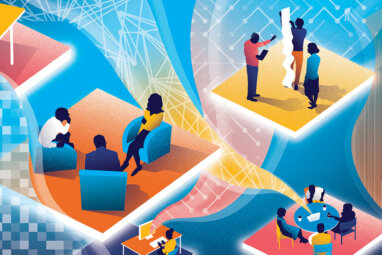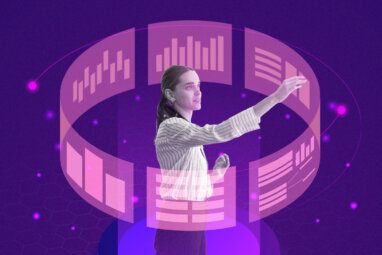1. H.P. Sims et al., The Thinking Organization (San Francisco: Jossey-Bass, 1986); and
G.P. Huber, “Organizational Learning: The Contributing Processes and the Literature,” Organization Science 2 (1991): 88–115.
2. See B. Hedberg, “How Organizations Learn and Unlearn,” in Handbook of Organizational Design, ed. P.C. Nystrom and W.H. Starbuck (London: Oxford University Press, 1981), pp. 3–27; and M.D. Cohen, “Individual Learning and Organizational Routine: Emerging Connections,” Organization Science 2 (1991): 135–139.
3. On limitations, see:
H.A. Simon, Models of Man (New York: John Wiley, 1957).
On capacity to learn, see:
R.M. Restak, The Mind (New York: Bantam, 1988).
4. D.A. Kolb, Experiential Learning: Experience as the Source of Learning and Development (Englewood Cliffs, New Jersey: Prentice-Hall, 1984).
5. E.R. Hilgard and G.H. Bower, Theories of Learning (New York: Appleton-Century-Crofts, 1966). See also:
G.A. Miller, “The Magic Number Seven, Plus or Minus Two: Some Limits on Our Capacity for Processing Information,” The Psychology Review 63 (1956): 81–97;
Simon (1957); and
A. Tversky and D. Kahneman, “Rational Choice and the Framing of Decisions,” in Rational Choice: The Contrast between Economics and Psychology, ed. R.M. Hogarth and M.W. Reder (Chicago: University of Chicago Press, 1987).
6. E. Jaques, Requisite Organization (Arlington, Virginia: Cason-Hall Associates, 1989).
7. E.H. Schein adds a third dimension — emotional conditioning and learned anxiety — that can have a powerful effect on the first two types of learning. See:
E.H. Schein, “How Can Organizations Learn Faster? The Challenge of Entering the Green Room,” Sloan Management Review, Winter 1993, pp. 85–92.
8. C. Argyris and D. Schon, Organizational Learning: A Theory of Action Perspective (Reading, Massachusetts: Addison-Wesley, 1978).
9. J. Piaget, Structuralism (New York: Basic Books, 1970).
10. Kolb (1984), p. 38.
11. Other schools include behavioral and rationalist learning theory. See:
Kolb (1984), p. 38.
12. Ibid., p. 21.
13. K. Ishikawa, What Is Total Quality Control? (Englewood Cliffs, New Jersey: Prentice-Hall, 1985), p. 59.
14. W.E. Deming, Quality, Productivity, and Competitive Position: Dr. W. Edwards Deming’s Seminar Notes (Ford Quality Education and Training Center, 1992).
15. E.H. Schein, Process Consultation, Volume II: Lessons for Managers and Consultants (Reading, Massachusetts: Addison-Wesley, 1987), p. 64.
16. Argyris and Schon (1978), p. 141.
17. F. Kofman, lecture slides (Cambridge, Massachusetts: MIT Sloan School of Management, 1992).
18. L. Postman, “Methodology of Human Learning,” in Handbook of Learning and Cognitive Processes, Vol. 3., ed. W.K. Estes (New York: John Wiley, 1976), pp. 11–69.
19. P.M. Senge, The Fifth Discipline (New York: Doubleday, 1990a). See also:
J.W. Forrester, World Dynamics (Cambridge, Massachusetts: Productivity Press, 1971).
20. Senge (1990a), pp. 192–193.
21. Argyris and Schon (1978), p. 9.
22. Ibid., p. 17.
23. Ibid.;
S.G. Winter, “The Case for ‘Mechanistic’ Decision Making,” in Organizational Strategy and Change, ed. H. Pennings (San Francisco: Jossey-Bass, 1985), pp. 99–113;
C. Perrow, Complex Organizations (New York: Random House, 1986); and
B.L.T. Hedberg, P.C. Nystrom, and W.H. Starbuck, “Camping on Seesaws: Prescriptions for a Self-Designing Organization,” Administrative Science Quarterly 21 (1976): 41–65.
24. B. Levitt and J.G. March, “Organizational Learning,” Annual Review of Sociology 14 (1988), pp. 319–340.
25. Winter (1985), p. 111.
26. H.A. Simon, Sciences of the Artificial (Cambridge, Massachusetts: MIT Press, 1981), p. 65.
27. R.M. Cyert and J.G. March, A Behavioral Theory of the Firm (Englewood Cliffs, New Jersey: Prentice-Hall, 1963).
28. J.G. March and J.P. Olsen, “The Uncertainty of the Past: Organizational Learning under Ambiguity,” European Journal of Political Research 3 (1975): 147–171.
29. R.L. Daft and K.E. Weick, “Toward a Model of Organizations as Interpretation Systems,” Academy of Management Review 9 (1984): 284–295.
30. For example, adaptation theories can be viewed as analogs of individual stimulus-response theories and strategic choice models having similarities with psychodynamic theories.
31. R.E. Miles et al., “Organizational Strategy, Structure, and Process,” Academy of Management Review 3 (1978): 546–563.
32. For a fuller treatment of this model, see:
D. Kim, “A Framework and Methodology for Linking Individual and Organizational Learning: Application in TQM and Product Development” (Cambridge, Massachusetts: MIT Sloan School of Management, Ph.D. Diss., 1993).
33. See D.C. Feldman, “The Development and Enforcement of Group Norms,” Academy of Management Review 9 (1984): 47–53; D.J. Isenberg, “Group Polarization: A Critical Review and Meta-analysis,” Journal of Personality and Social Psychology 50 (1986): 1141–1151; and
J.R. Hackman, “Group Influences on Individuals in Organizations,” in Handbook of Industrial and Organizational Psychology, ed. M.D. Dunnette (Chicago: Rand-McNally, 1976).
34. R.E. Walton and J.R. Hackman, “Groups under Contrasting Management Strategies,” in Designing Effective Work Groups, ed. P.S. Goodman (San Francisco: Jossey-Bass, 1986).
35. H.A. Simon, “Bounded Rationality and Organizational Learning,” Organization Science 2 (1991): 125–134; and J.W. Forrester, “System Dynamics and the Lessons of Thirty-Five Years,” Systems-Based Approach to Policy Making, ed. K.B. DeGreene (Norwell, Massachusetts: Kluwer Academic Publishers, 1993).
36. See, for example:
A. Bostrom, B. Fischhoff, and G.M. Granger, “Characterizing Mental Models of Hazardous Processes: A Methodology and an Application to Radon,” Journal of Social Issues 48 (1992): 85–100.
37. Senge (1990a).
38. J.D. Sterman, “Modeling Managerial Behavior: Misperceptions of Feedback in a Dynamic Decision-Making Experiment,” Management Science 35 (1989): 321–339.
39. Senge (1990a); and
D.H. Kim, Toolbox Reprint Series: Systems Archetypes (Cambridge, Massachusetts: Pegasus Communications, 1992).
40. N. Zeniuk, “Learning to Learn: A New Look at Product Development,” The Systems Thinker 4 (1993): 1.
41. P.M. Senge, “The Leader’s New Work: Building Learning Organizations,” Sloan Management Review, Fall 1990b, pp. 7–23; and D.H. Kim, Toward Learning Organizations: Integrating Total Quality Control and Systems Thinking (Cambridge, Massachusetts: Pegasus Communications, 1990).
42. Senge (1990b).




